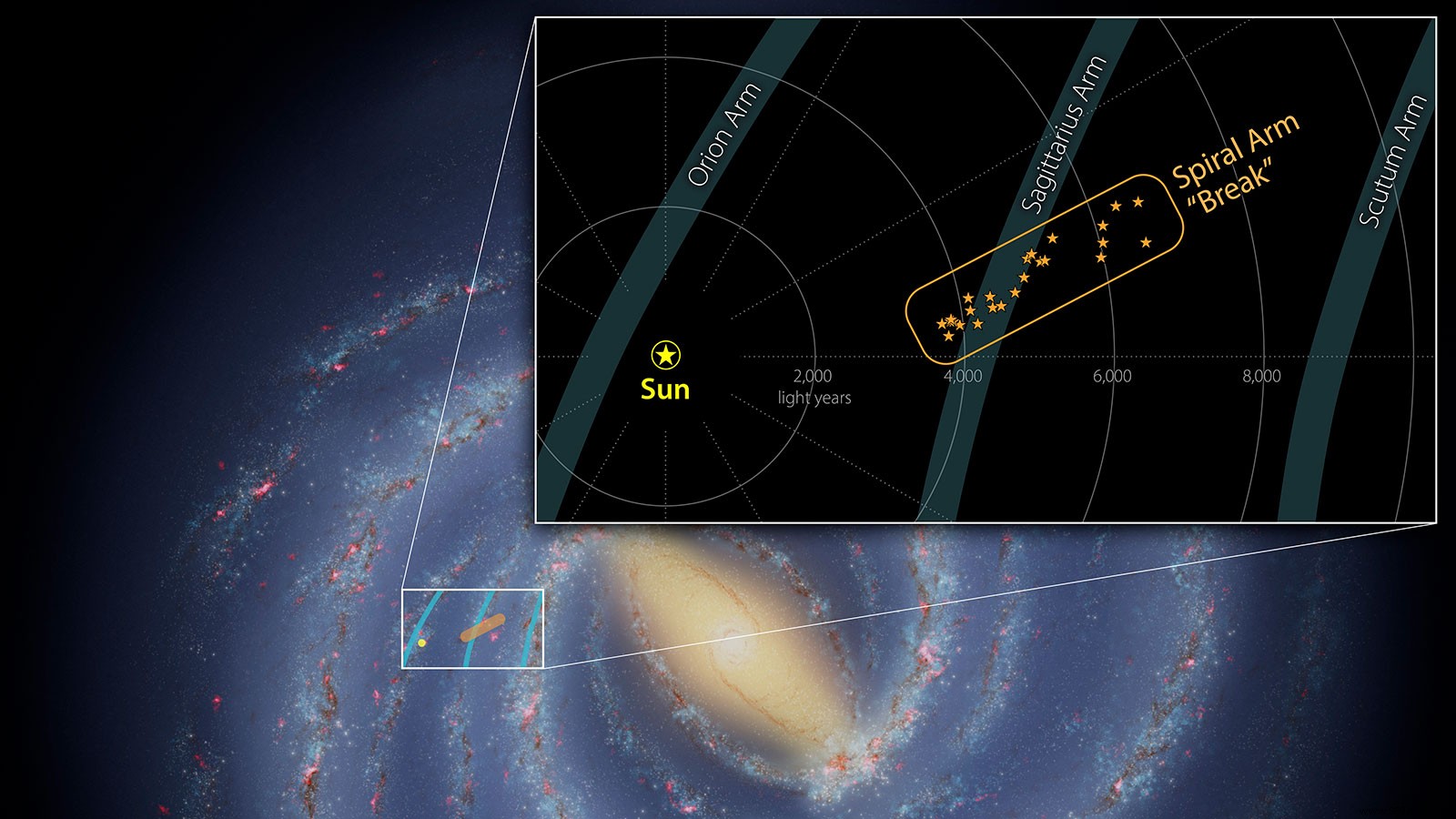Astronomers announce that they have identified a contingent of young stars accompanied by clouds of gas protruding from one of the spiral arms of the Milky Way. Spanning some 3,000 light-years, this is the first time such a structure has been identified in the Galaxy.
Astronomers have a fairly rough idea of the size and shape of the arms of the Milky Way, but it is always difficult to grasp the structure of our Galaxy from the interior. It is also impossible to send emissaries beyond its limits to get an overview, as the distances are enormous. Several million human lives would not be enough. Also, researchers have to manage in other ways. And sometimes, we come across a few surprises.
To find out more, a team recently focused on a neighboring part of one of the arms of the Galaxy, that of Sagittarius. The researchers first relied on data from the Spitzer Space Telescope and its "infrared eye" to probe for the presence of young stars contained within. They then used data from ESA's Gaia mission to precisely measure the distances between these stars.
These combos revealed a group of "rebellious" stars and nebulae. These objects move at almost the same speed and in the same direction through space, but form a structure spanning approximately 3,000 light-years exceeding the limits of the arm of Sagittarius (image below).
“ A key property of spiral arms is the force with which they wrap around a galaxy ” , explains Michael Kuhn, astrophysicist at Caltech. “ This characteristic is measured by the angle of inclination of the arm. A circle has a pitch angle of 0 degrees, and as the spiral opens, the pitch angle increases. Most models of the Milky Way suggest that the arm of Sagittarius forms a spiral that has an angle of about 12 degrees. Here, the examined structure stands out with an angle of almost 60 degrees ” .

Similar structures have already been identified in the arms of other spiral galaxies, but this is a first in the Milky Way.
The newly discovered element contains four well-known nebulae:the Eagle Nebula (which contains the Pillars of Creation), the Omega Nebula, the Trifid Nebula and the Nebula of the lagoon. Their analyses, from the 1950s, had moreover made it possible to deduce the very existence of the arm of Sagittarius. At the time, however, the proposed measurements between the stars contained within were not precise enough to highlight the presence of this galactic "splinter".
At this time, astronomers do not yet know why some stars "fall out of frame". More generally, they also don't yet fully understand what causes arms to form in spiral galaxies. In this sense, the ability to measure the movement of individual stars will be very useful in understanding these phenomena.
“Ultimately, this reminds us that there are many uncertainties about the large-scale structure of the Milky Way, and we need to examine the details if we want to understand that bigger picture” , underlines Robert Benjamin, of the University of Wisconsin-Whitewater and co-author of the study. “This structure is only a small piece of the Milky Way, but it could tell us something important about the Galaxy as a whole” .